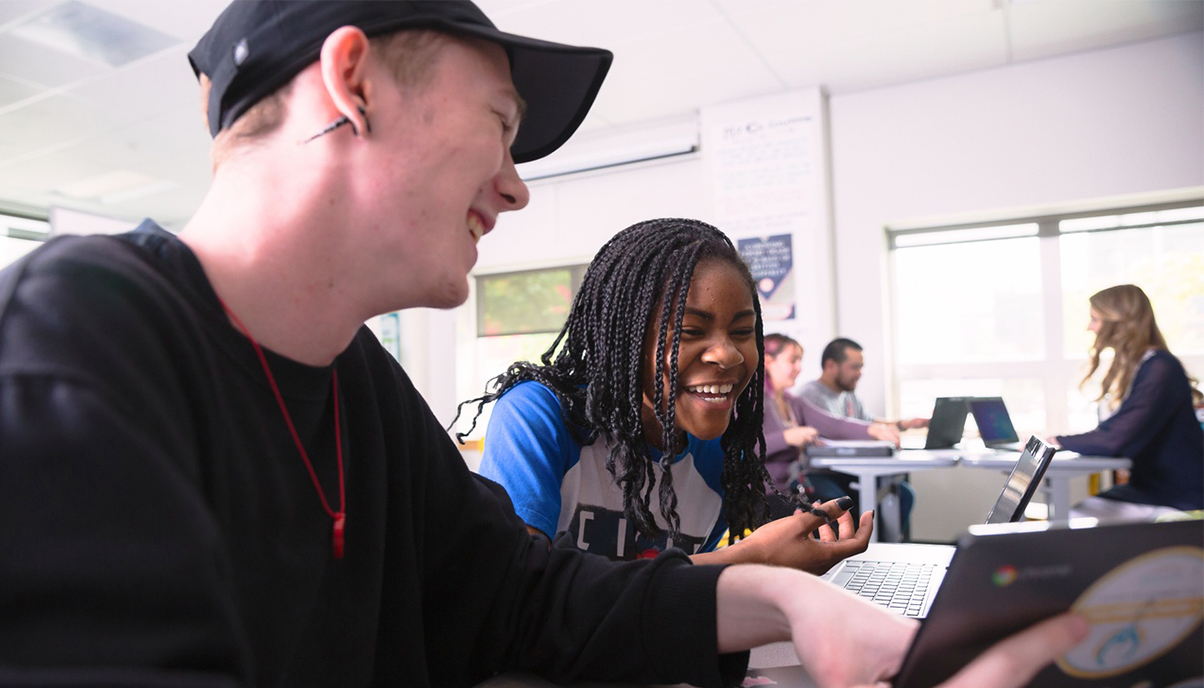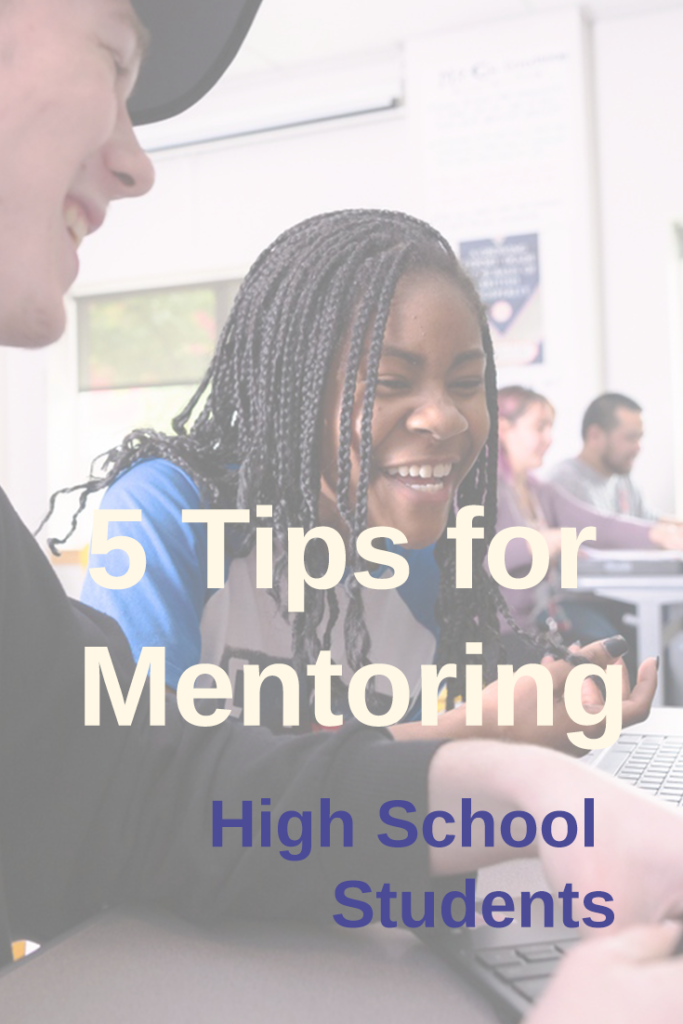
Need a conversation starter? Ask a young person about their favorite superhero. You can learn a lot about kids ages five to 85 from this one exchange, regardless of whether they even like superheros.
Lauren Davenport, physical education teacher and athletic director at Cristo Rey De La Salle East Bay High School in Oakland, California, makes it a priority to start each mentoring check-in with simple questions that get at the heart of the individual. “It starts with building authentic relationships. I ask how they’re doing, how their family is… I don’t even look at our agenda questions to start.”
When Lauren joined Cristo Rey De La Salle High School in Oakland, California, at the start of the 2018-19 school year, she was new to the Summit Learning approach to mentoring. But since then, she has developed a mentoring rhythm and routine that works.
Each week, Lauren mentors 16 students, meeting four times a week with the same group during a structured 50-minute learning period. Every conversation is different but builds on a shared narrative between the individual mentee and mentor. Lauren might talk to one student about their Quinceanera, then switch gears to compare DC and Marvel shows with another. As she describes their conversations,
“I love when they share their passions and come alive. You find out what they’re into, and pretty soon they’re teaching me.”
Below, you’ll find some of Lauren’s best strategies for developing strong mentor relationships and managing structured learning time with high school students.
5 Mentoring Strategies that Work
1 – Start with a Greeting. Line up outside your doorway as students enter the classroom. Shake hands, look each student in the eye, and greet them by name. This simple but personal act goes a long way in cultivating a student’s sense of belonging.
2 – Hold Students Accountable. At the start of each learning period, hold students accountable for exactly what they’ll accomplish during that time. As Lauren greets students, she hands them a post-it note. Students are directed to write at least two SMART goals for the learning period. There’s time set aside during this class period — a combination of mentor check-ins and independent work — for students to read their SMART goals to the group and receive feedback.
Students have until the end of class to work toward and then refine their goals, which can be as simple as taking notes for a specific class. In order to leave, students are expected to hand their SMART goal to Lauren with a note about what they actually accomplished or adjusted for next time.

3 – Be Strategic in Classroom Setup. Classroom setup not only supports students in their learning, but also serves as a form of classroom management. The classroom spaces for structured mentor time and independent work are all painted blue and considered quiet spaces. It’s a place where students have the opportunity to work independently or in small groups, while Lauren checks in with her four mentees for the day.
Because there are other students in the room when Lauren does her mentor check-ins, she’s strategic about where student work areas are placed. Her seating arrangement doesn’t shift often but includes a variety of spaces — a couch for independent work and students doing their check-ins with Lauren, quiet corners where students can listen to music while they work. Desks and tables face the walls and windows. This flexible space allows Lauren to circulate in-between her mentoring check-ins and have visibility into what students are working on.
4 – Balance the Personal with Business. Start mentoring sessions with personal questions like, “How are you? How is your family?”; these inquiries are essential to building strong relationships based on trust. “I’m good about taking initiative to ask questions and get caught up on student’s lives,” says Lauren.
With only 10 minutes or so for each check-in though, Lauren is also adept at tracking time and shifting the conversation when necessary. Students share their personal or academic reflections for the previous week, as well as their learning goals for the current week. Lauren then leaves time for offering students assistance or guidance on any of their goals for the week.
5 – Be Consistent. True relationship building depends on consistency, both in terms of meeting regularly and continuously following-up on student’s interests and goals. “I make sure when I’m doing check-ins, to make notes about things I want to remember. This lets my mentees know that I’m listening and that I care,” says Lauren.
She also expects her students to be consistent in preparing for their mentor check-ins. Lauren makes a point to wait until students have done their check-in prep, like making notes on goals or anything in particular they want to discuss that day, using the Mentoring tool on the Summit Learning Platform.
Share your own mentoring lessons on Facebook or Twitter and use #MentoringMonth.

